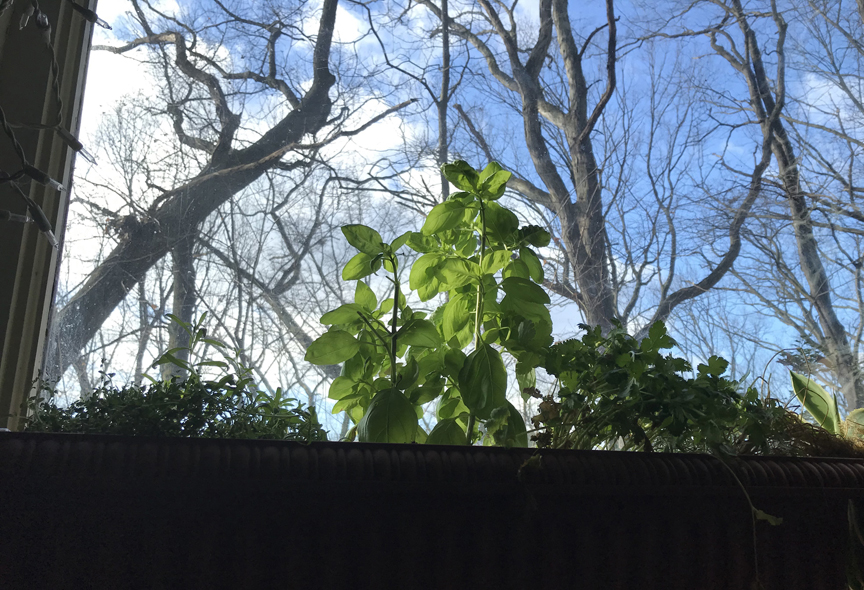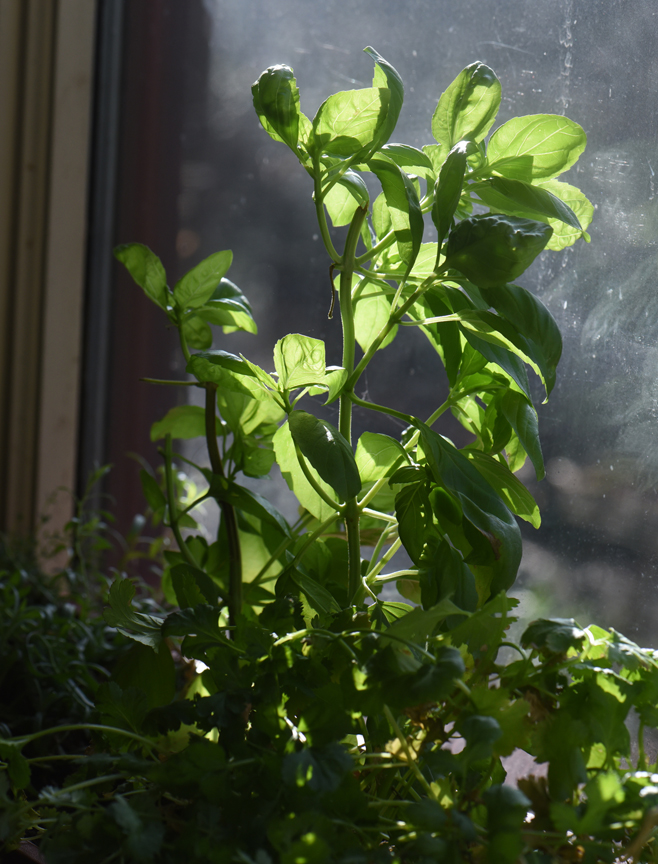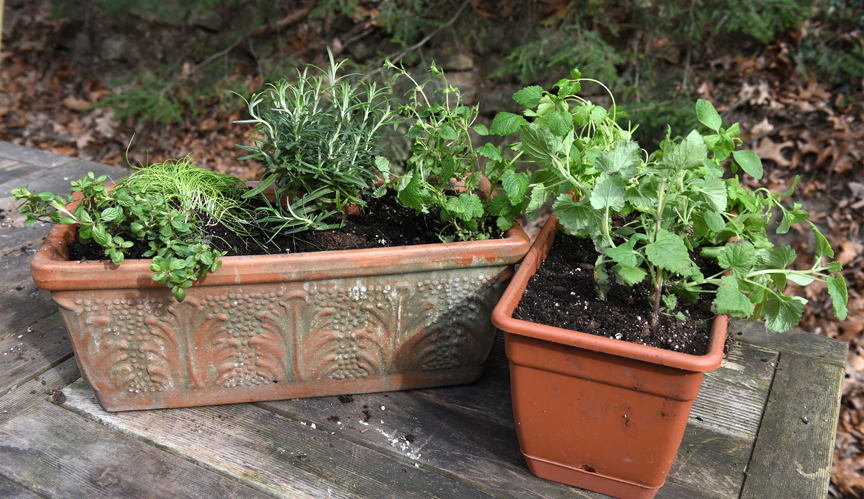How to grow fresh herbs indoors
Posted on: January 9, 2020 | Written By: Doug Oster |
Bright afternoon sun streams in the dining room window, backlighting a tall ‘Genovese’ basil plant. The herb is flanked by rosemary, thyme, tarragon, parsley and dill. The dill has bitten the dust, but the others are doing well on the windowsill. They will never grow with the vigor of outdoor plants in window light, but they do provide a little taste of summer. A garden of indoor herbs gives gardeners and foodies alike something to enjoy for the winter.

Windowsill herb gardens are one way for gardeners and foodies to get through the winter, enjoying fresh ingredients. Photos by Doug Oster

This ‘Genovese’ basil is thriving on the windowsill, growing in a container.
Choosing the right basil
In the past, my windowsill herb boxes used either ‘Spicy Globe’ or ‘African Blue’ basil as they perform admirably during the short days of winter. The ‘Genovese’ variety though is the happiest of all the plants in the container this year and was harvested often during the holidays. It’s the tallest of the bunch, so it was planted in the center of the container, surrounded by the others.
Which window is best for herbs?
One key to growing herbs indoors is light. Finding a window with a southern exposure is best, but the plants will grow regardless. Adding some artificial light would really help the plants along.
Find a container with drainage, which will fit near the window, and fill it with moist planting mix. Whenever planting in containers, it’s best to have soil that has already been moistened. Mix the medium with water until it clings together when squeezed, but it shouldn’t be dripping water.
How to plant
Once the container is filled, it’s time to plant the herbs, which can be found at garden centers or greenhouses. They don’t mind being crowded; they only need a couple of inches between plants. Besides the varieties planted in my current container, things like sage, oregano, chives, garlic chives, curry, olive plant, mint, cilantro, marjoram, winter savory and others will grow this way.

These two planters are filled with a variety of herbs that will be grown indoors during the end of the winter, then taken outside for the summer.
When to water
Keep the soil watered but on the dry side. Many herbs are from a Mediterranean climate and don’t like wet feet. It’s easy to get a handle on the right moisture level just by watching the plants. Push a finger several inches down into the soil to determine if water is needed.
Fertilization doesn’t begin until the end of February, when the days get longer. A good, organic liquid fertilizer like Grow from Espoma will really make a difference as the season progresses.
Heading outside for spring
The entire container can be taken outdoors after all chance of frost has passed and can be left to continue growing all summer and then brought back inside as the weather gets cold.
Growing fresh herbs is a great way for gardeners to keep busy waiting for the seasons to change. They will add something special to dishes, and their intoxicating fragrance makes us think of long summer days.
Doug Oster is editor of Everybody Gardens, a website operated by 535Media, LLC. Reach him at 412-965-3278 or doster@535mediallc.com. See other stories, videos, blogs, tips and more at everybodygardens.com.
More from Everybody Gardens
Getting garden tools in shape for the season.
ADA accessible garden helps students.
Fresh garden recipes inspire treasured recipes.